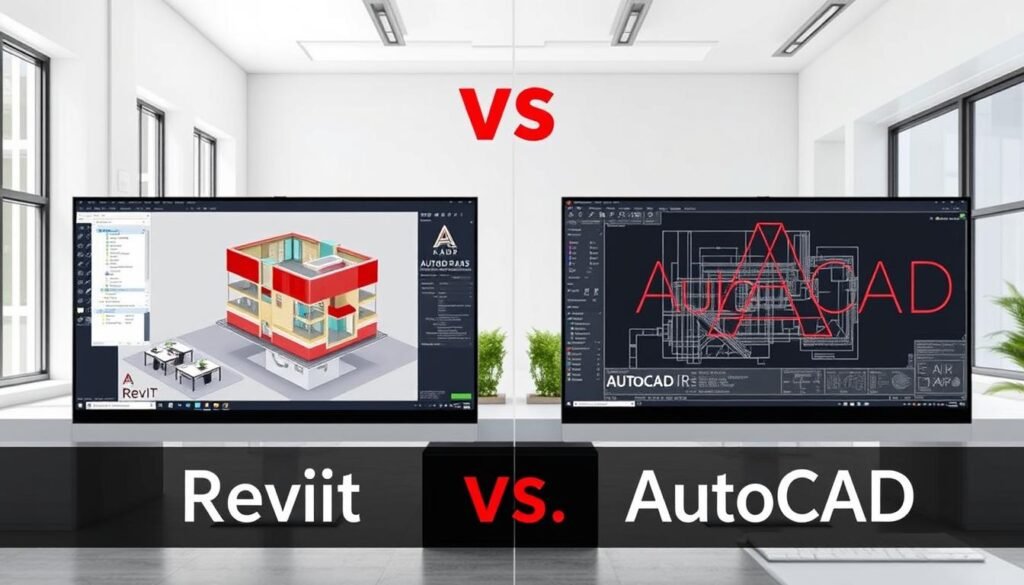Architects in India are increasingly relying on Revit to streamline their design processes and improve collaboration. However, mastering Revit can be a daunting task, especially for those without prior experience. BimSrv Academy offers a comprehensive solution to this challenge through its project-based learning approach.
By focusing on real-world projects, BimSrv Academy’s revit training enables architects to gain hands-on experience and develop the skills needed to tackle complex design tasks. This approach not only enhances their technical knowledge but also prepares them for the demands of the AEC industry.
Key Takeaways
- Mastering Revit is crucial for architects to stay competitive in the industry.
- BimSrv Academy’s project-based learning approach provides hands-on experience.
- Revit training enhances technical knowledge and prepares architects for industry demands.
- BimSrv Academy’s expertise in BIM knowledge and technical solutions empowers AEC professionals.
- Effective Revit training is essential for architects to improve collaboration and design processes.
The Challenges Architects Face When Learning Revit
Architects often encounter significant hurdles when attempting to master Revit, a crucial tool in modern architectural practice. The complexity of Revit, coupled with the need for practical application, creates a challenging learning environment.
Common Obstacles in Traditional Revit Training
Traditional Revit training often falls short due to several common obstacles. These include:
- Lack of hands-on experience
- Insufficient coverage of advanced features
- Outdated training materials
Such limitations hinder the learning process, making it difficult for architects to transition from theoretical knowledge to practical application.
Why Theory-Only Approaches Fall Short
Theory-only approaches to learning Revit fail to equip architects with the practical skills needed for real-world projects. Without project-based learning, architects may struggle to:
- Understand how to apply Revit tools in context
- Manage complex projects effectively
- Troubleshoot common issues that arise during project execution
As BimSrv Academy emphasizes, “Learning Revit is not just about understanding the software; it’s about applying it to solve real architectural challenges.”
The Indian Architectural Context and BIM Adoption
The Indian architectural context presents unique challenges and opportunities for BIM adoption. With the growing demand for sustainable and efficient building practices, Indian architects are increasingly turning to Revit and BIM methodologies.
| Aspect | Traditional Methods | BIM with Revit |
|---|---|---|
| Design Complexity | Limited by manual drafting | Enhanced with parametric modeling |
| Collaboration | Difficult due to fragmented data | Improved through integrated BIM models |
| Project Delivery | Slower due to manual processes | Faster with automated documentation |
As the industry moves towards more integrated and efficient practices, understanding and adopting Revit and BIM are becoming essential skills for architects in India.

BimSrv Academy’s Project-Based Revit Course for Architects
BimSrv Academy’s Revit course is tailored to meet the needs of architects through a project-based approach, providing a comprehensive learning experience that combines theoretical foundations with practical application.
Comprehensive Course Structure and Curriculum
The course is structured to cover the full spectrum of Revit skills required by architects, from basic to advanced levels. The curriculum includes:
- Introduction to Revit and its interface
- Creating and managing Revit projects
- Designing with Revit: walls, floors, roofs, and other elements
- Advanced techniques: families, templates, and worksharing
- Documentation and detailing
This comprehensive curriculum ensures that architects gain a thorough understanding of Revit and can apply their knowledge to real-world projects.
Real-World Projects Tailored to Indian Architecture
The course emphasizes learning through real-world projects that are relevant to the Indian architectural context. Examples include:
| Project Type | Description | Skills Learned |
|---|---|---|
| Residential Building | Design and documentation of a multi-story residential building | Modeling, detailing, and documentation |
| Commercial Complex | Design and analysis of a commercial complex with mixed-use spaces | Advanced modeling, energy analysis |
| Heritage Conservation | Documentation and restoration planning for a historical building | Measured drawing, conservation techniques |
By working on these projects, architects gain hands-on experience with Revit in the context of Indian architecture.

Learning Formats: Online, Hybrid, and In-Person Options
BimSrv Academy offers flexibility in learning formats to accommodate different needs and preferences:
- Online: Fully online courses with live sessions and recorded lectures
- Hybrid: Combination of online and in-person training
- In-Person: Traditional classroom training with hands-on exercises
This flexibility allows architects to choose the learning format that best suits their schedule and learning style.
“Choosing the right Revit training program can be a game-changer for architects. BimSrv Academy’s project-based course has been instrumental in enhancing my skills and confidence in using Revit for complex projects.” – Architect, ABC Design Studio
Expert Instruction from Industry Professionals
The course is taught by experienced professionals with extensive backgrounds in architecture and BIM. Instructors bring real-world insights and best practices to the classroom, ensuring that architects receive relevant and up-to-date training.
By combining comprehensive curriculum, real-world projects, flexible learning formats, and expert instruction, BimSrv Academy’s Revit course provides a top-rated Revit training program that prepares architects for success in their careers.
Learning Through Doing: The Project-Based Approach
The project-based learning methodology adopted by BimSrv Academy’s Revit BIM training program is designed to simulate real-world architectural projects, providing a comprehensive learning experience for architects.
Progressive Skill Development from Fundamentals to Advanced Techniques
BimSrv Academy’s advanced Revit course for architects is structured to progressively develop skills from basic to advanced levels. The course begins with foundational concepts and gradually introduces more complex techniques, ensuring that learners build a strong understanding of Revit.
As learners progress, they are introduced to advanced features and tools within Revit, enabling them to tackle intricate architectural designs and models. This progressive skill development is crucial for mastering Revit and applying it effectively in professional projects.
Building a Complete Architectural Project from Concept to Documentation
The project-based approach involves guiding learners through the process of creating a complete architectural project. This encompasses several stages, from conceptual design to final documentation.
Conceptual Design and Massing
The initial stage involves conceptual design and massing, where learners develop the initial building form and massing studies using Revit’s conceptual modeling tools.
Detailed Modeling and Documentation
Following conceptualization, learners proceed to detailed modeling, where they develop detailed architectural models, and documentation, creating necessary drawings and schedules.
Rendering and Presentation
The final stage includes rendering and presentation, where learners use Revit to create photorealistic renderings and compelling presentations of their projects.
Collaborative Learning Environment and Peer Feedback
BimSrv Academy fosters a collaborative learning environment where participants can share their work, receive feedback from peers, and learn from one another’s experiences and approaches. This collaborative setting enhances the learning process, providing valuable insights and promoting a deeper understanding of Revit and its applications in architectural practice.
Transforming Architectural Practice with Revit Training for Architects
BimSrv Academy’s project-based Revit course is designed to transform the way architects work on real-world projects. By focusing on practical, hands-on training, architects can immediately apply their new skills to professional projects, enhancing their productivity and the quality of their work.
Immediate Application to Professional Projects
Upon completing the Revit modeling course, architects can directly apply their knowledge to ongoing and upcoming projects. This immediate application helps in streamlining workflows, reducing errors, and improving overall project efficiency. For instance, architects can use Revit to create detailed building information models that include everything from the structural elements to the MEP systems, allowing for better coordination among stakeholders.
Career Advancement and Specialization Opportunities
The project-based Revit course not only enhances current skills but also opens up new avenues for career advancement and specialization. Architects who master Revit can move into specialized roles such as BIM coordinators or managers, or they can start their own BIM consulting firms. The demand for professionals with expertise in Revit and BIM is on the rise, making this training a valuable investment in their careers.
Industry Recognition and Certification
Completing a Revit modeling course from a reputable institution like BimSrv Academy can lead to industry recognition and certification. This recognition is crucial in a competitive market, as it validates an architect’s skills and commitment to staying updated with the latest technologies. It can also be a significant differentiator when bidding for projects or seeking new career opportunities.
Success Stories from Indian Architects and Firms
Several Indian architects and firms have benefited significantly from BimSrv Academy’s Revit training. For example, a leading architectural firm in Mumbai reported a 30% reduction in project timelines after their team completed the course. Another architect from Bangalore noted that the training helped him secure a senior position in a prestigious firm. These success stories highlight the practical impact of the training on real-world architectural practices.
| Benefits of Revit Training | Description | Impact |
|---|---|---|
| Immediate Application | Directly apply Revit skills to professional projects | Enhanced productivity and reduced errors |
| Career Advancement | Opens up new career paths and specialization opportunities | Increased demand for skilled professionals |
| Industry Recognition | Certification and recognition within the industry | Competitive edge in the job market |
Conclusion: Elevate Your Architectural Career with BimSrv Academy Revit Training
BimSrv Academy’s Revit training for architects is designed to bridge the gap between theoretical knowledge and practical application, empowering AEC professionals to excel in their careers. By focusing on project-based learning, the academy provides a comprehensive understanding of Revit, enabling architects to efficiently manage projects from concept to documentation.
The BimSrv Academy Revit course is tailored to meet the specific needs of the Indian architectural context, ensuring that participants gain relevant skills that can be immediately applied to their professional projects. With expert instruction from industry professionals and a collaborative learning environment, architects can enhance their proficiency in Revit and stay competitive in the industry.
By enrolling in BimSrv Academy’s Revit training, architects can unlock new career advancement opportunities, specialize in high-demand areas, and achieve industry recognition. As the AEC industry continues to evolve, the demand for skilled professionals with expertise in Revit and BIM technologies is on the rise. BimSrv Academy’s Revit training for architects is the key to unlocking this potential and elevating your architectural career to new heights.

